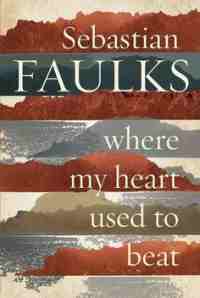Where My Heart Used to Beat by Sebastian Faulks
 Wednesday, April 27, 2016 at 9:43AM
Wednesday, April 27, 2016 at 9:43AM 
Published by Henry Holt and Co. on January 26, 2016
Robert Hendricks is a London psychiatrist. Despite all the people he has met in more than 60 years of life, he feels utterly alone. He has denied himself both passion and love since the end of the war. His latest failed relationship is ending, as is the marriage of the woman he was seeing.
To take a break from his life, Hendricks accepts an invitation to visit an elderly man who lives on an island off the coast of France. Dr. Pereira is a retired neurologist/psychiatrist who knew Hendricks’ father during World War I. Having admired a book that Hendricks wrote, Pereira hopes to tell Hendricks about his father while enlisting Hendricks as the executor of his literary estate. Sensing that Hendricks is troubled, Pereira encourages Hendricks to talk about his involvement in World War II. Touched by Pereira’s concern, Hendricks opens up about experiences that he has always kept to himself.
What follows is a war story as Hendricks recalls his uncertain leadership on the Italian front. Some of the story is conventional, relating the familiar scenes that a reader encounters in stories of the Second World War. Some of the story is powerful, in the way that strong war stories tend to be. Hendricks’ memories of the war include an Italian love story, a story about love’s destructive power that shapes much of the rest of his life. All of it those sections are well crafted and the most intense scenes capture all the fears and frailties and courage and confusion of men at war. Hendricks’ recollections of the war are the best part of the novel.
Interspersed with unfolding episodes of the war story are intelligent conversations between Pereira and Hendricks that explore mental health and the meaning of life. Hendricks argues that man is “a failed species, a disastrous mutation,” while the old psychiatrist hopes to expose the root of those thoughts in a first step toward healing.
The conversation spurs Hendricks to reconnect with his past. He begins to do that at about the novel’s midway point. He tells the reader about his medical career, his research into the treatment of delusional patients, and his experiences in a foreign city where he wrote a book about treating the mentally ill. During his visits to Pereira, Hendricks also makes a new but odd connection to the present, in the form of a young woman named Céline who “inhabits no reality that [Hendricks] can understand.” All of that is moderately interesting, although less so than the novel’s first half, and Sebastian Faulks’ smooth prose makes the reading time pass quickly.
I think the point of the novel (which Faulks expressly states at some point) is that “you can only be happy if you are open to your past.” Every new experience is made richer by memories of similar experiences. “But if your mind is somehow blocked -- if it grips the present moment too hard -- then your soul is not porous; the past can’t seep through you, healing and deepening; and you have lived in vain.”
Where My Heart Used to Beat is thus a journey of self-discovery that depends upon Hendricks’ ability to become open to his past. With Pereira’s help, Hendricks makes his most important discovery at the novel’s end. It comes as a bit of an anti-climax. Another component of the novel’s ending, concerning one of the women in Hendricks’ life, struck me as predictable, while revelations about Céline seem a bit contrived. Although the concluding chapters are slightly disappointing, perhaps Faulks was trying to show the reader that life is sometimes disappointing, that in its final years, life often lacks the drama or resolution we might hope for. Despite the absence of an emotional kick, the novel as a whole is a thoughtful meditation on the mind and memory, and an interesting examination of theories of mental health that prevailed in the early-to-middle years of the twentieth century.
RECOMMENDED
Reader Comments